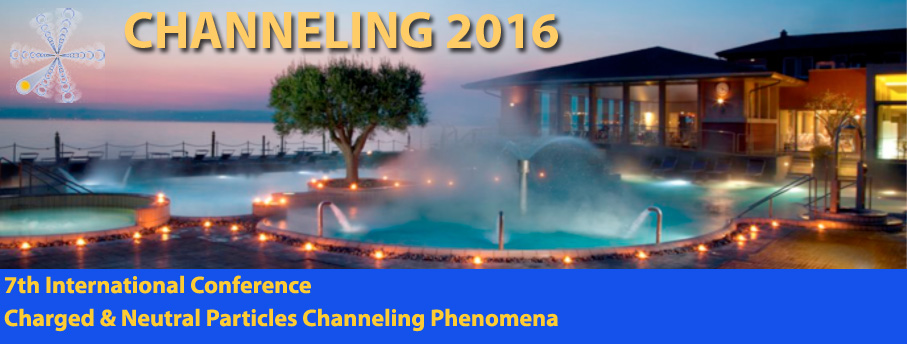Speaker
Prof.
Nikolay Kalashnikov
(National Research Nuclear University Mephi)
Description
It is well known [1-2] that the particle trajectory in a axial symmetric potential U(r), is defined by two-dimensional equation of motion with effective potential Ueff(r)=U(r) + Mz2/2mr2, where m is the particle mass and Mz is its conserved angular momentum. The transversal movement of electrons or positrons in axial channeling mode must be considered in quantum approach based on the Schrödinger equation, but with the realistic averaged atomic axis potentials this problem can be solved only by numerical calculations. In this report we propose a less strict but more easy-to-interpret approach, permitting to analytically consider the quantum characteristics of transversal motion of particles in axial channeling based on Bohr quantization conditions [2]: dUeff(r)/dr =0; Mz= ħn (n = 1, 2, 3,…), where ħ - is the Plank constant. We propose to use a convenient for analytical consideration and quite realistic model potentials for axial channeling parabolic Ue(r) = U0 (2r/d)2 (for positrons) or anti-parabolic Ue(r) = -U0 (1-2r/d)2 (for electrons) with effective depth U0 = kEB , where d equals to the lattice constant, EB= 13,6 eV is the Bohr energy and k is a dimensionless constant ( k ≥2), depending on the type and orientation of the crystal and calculated by means of optimal approximation to numerically calculated realistic potential [3-7] in its effective area. It is shown that at nonrelativistic energies the number of the allowed quantum states for electrons and positrons is limited. For example, in Si, there may be 1-2 states for electrons and 3-4 for positrons. The resonance criterion for capturing of particles into channeling regime in case when the transversal momentum of incident particle is equal to ħ•n (n = 1, 2,...) is introduced. The effect may be detected by observing the increased optical radiation yield at the certain discrete frequencies, corresponding to the distances between the transverse motion energy levels.
References:
1. Ferretti Bruno. La Radici Classiche della Meccanica Quantica. Borighieri.Torino.1980.415p.
2. Fermi Enrico. Notes on Quantum Mechanics. A Course Given by E.Fermi at the University of Chicago. 1954.
Feynman Richard P. Quantum Electrodynamics. A Lecture Note. W.A. Benjamin. Inc. New York. 1961
3. Lindhard J. Dansk.Vid. Selsk. Math.-Phys. Medd, 1965, v.34.
4. Baryshevskii V.G. Channeling, Radiation and Reactions in Single Crystal at High Energies. Minsk. University. (in Russian). 1982. 256 p.
5. Vorobiev S.A. Channeling of Electron beams. Energoatomizdat. Moscow. (in Russian). 1984.96 p.
6. Kalashnikov N.P. Coherent Interactions of Charged Particles in Single Crystals. (Scattering and Radiative Processes in Single Crystals). Harwood Academic Publishers. London-Paris-New York. 1988. 333p.
7. Ryabov V.A. Channeling Effect. Energoatomizdat. Moscow. (in Russian). 1994.240 p.
Summary
An easy-to-interpret approach, permitting to analytically consider the quantum characteristics of transversal motion of particles in axial channeling based on Bohr quantization conditions is proposed. The resonance criterion for capturing of particles into channeling regime is introduced.
Primary authors
Dr
Andrey Olchak
(MEPhI, Russia)
Prof.
Nikolay Kalashnikov
(National Research Nuclear University Mephi)

